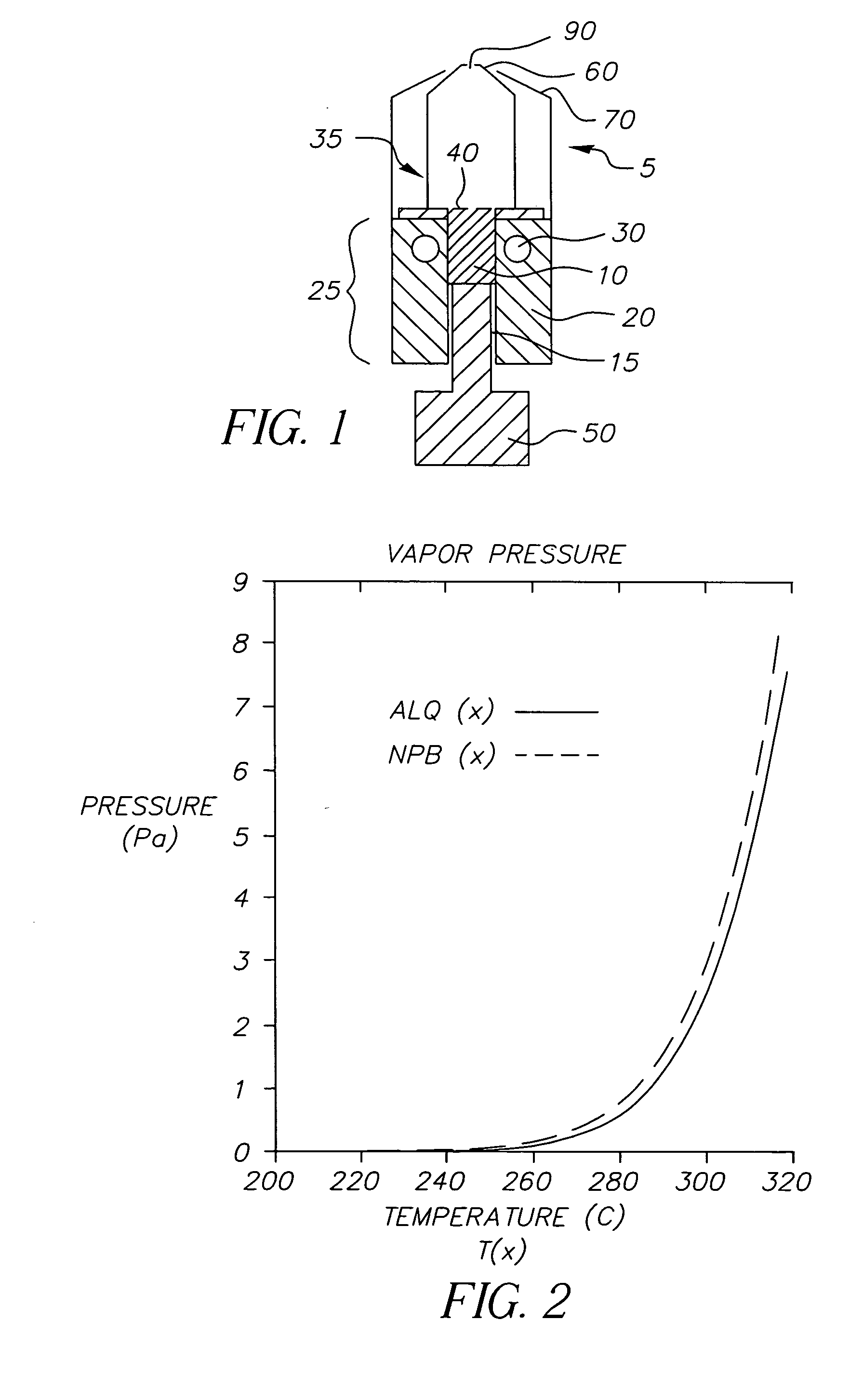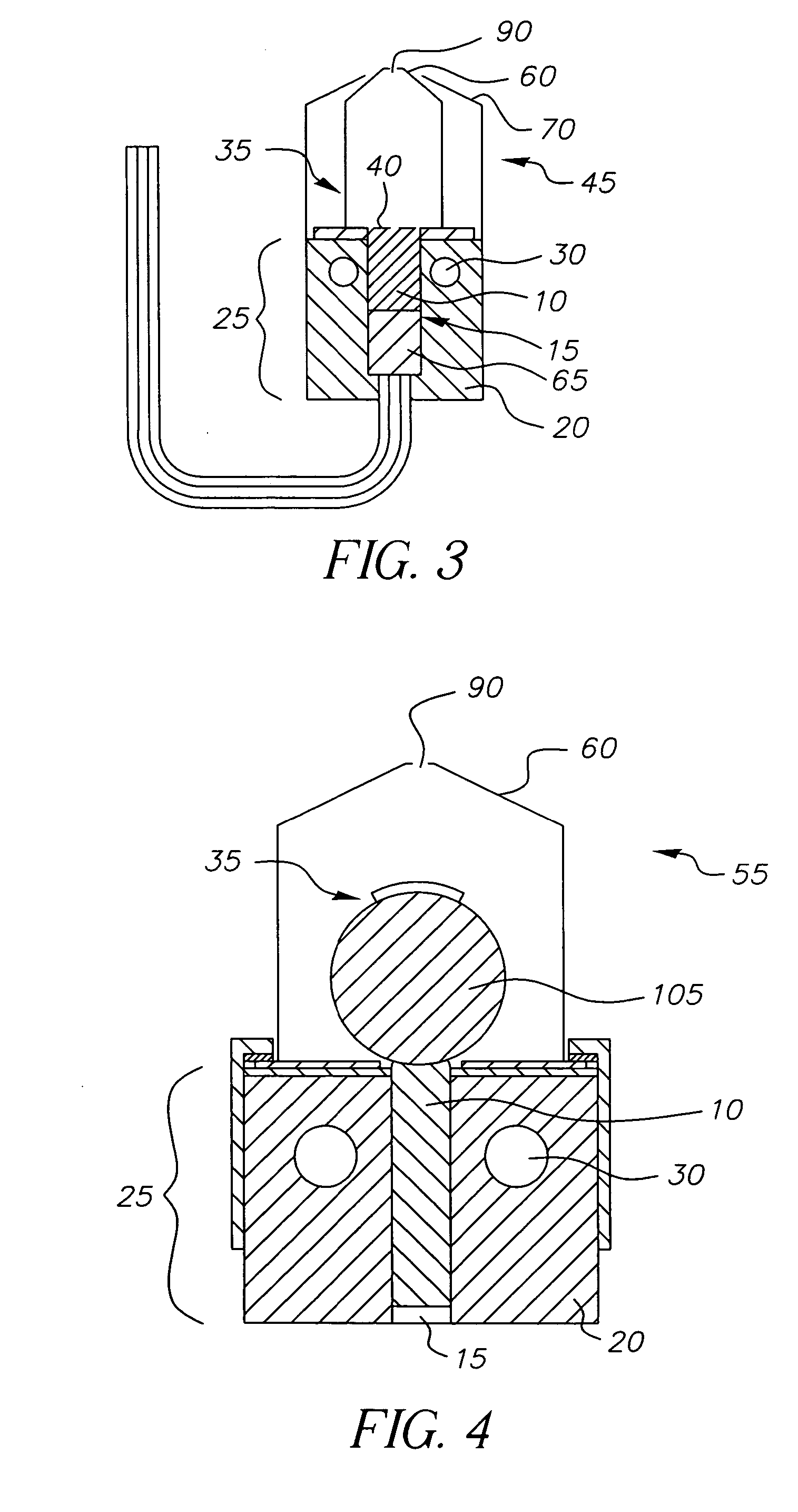Device and method for vaporizing temperature sensitive materials
a temperature sensitive material and device technology, applied in the field of physical vapor deposition, can solve the problems of significant degradation, changes in the structure of the molecule and associated changes in the material properties, and the material is often subject to degradation, so as to reduce the risk of degrading, steady heater temperature, and steady vaporization rate
- Summary
- Abstract
- Description
- Claims
- Application Information
AI Technical Summary
Benefits of technology
Problems solved by technology
Method used
Image
Examples
second embodiment
[0036]FIG. 3 shows a cross-sectional view of a device of this disclosure. Vaporization apparatus 45 includes first heating region 25, second heating region 35, base block 20, control passages 30, chamber 15, manifold 60, apertures 90, shields 70, and permeable member 40 as described above. Vaporization apparatus 45 does not include a piston, but instead includes liquid 65.
[0037] Organic material 10 can be as described above and is in close thermal contact with base block 20. Organic material 10 is metered at a controlled rate from first heating region 25 to second heating region 35, which is heated to a temperature above the vaporization temperature of organic material 10, or each of the components thereof. Organic material 10 is pushed against permeable member 40 through contact with a low vapor pressure liquid 65. Liquid 65 must be a liquid at the operating temperature of vaporization apparatus 45. For example, many organic materials commonly used in OLED devices have a vaporizati...
third embodiment
[0040]FIG. 4 shows a cross-sectional view of a device of this disclosure. Vaporization apparatus 55 includes first heating region 25, base block 20, control passages 30, chamber 15, manifold 60, and apertures 90 as described above.
[0041] Organic material 10 can be as described above and is in close thermal contact with base block 20. Organic material 10 is pushed by either a piston or a liquid as described above against the periphery of rotating drum 105 and is carried as a fine powder film from first heating region 25 to second heating region 35. The powder can be attracted to the drum by electrostatic forces and rotating drum 105 can have surface features such as a knurled pattern or a pattern of small recesses having a definite volume in which a controlled volume of organic material 10 is contained so as to transport a fixed volume of powder. A wiper can optionally be used to remove excess powder from the surface of rotating drum 105. Rotating drum 105 is preferably constructed s...
PUM
| Property | Measurement | Unit |
|---|---|---|
| Temperature | aaaaa | aaaaa |
| Volume | aaaaa | aaaaa |
| Boiling point | aaaaa | aaaaa |
Abstract
Description
Claims
Application Information
 Login to View More
Login to View More - R&D
- Intellectual Property
- Life Sciences
- Materials
- Tech Scout
- Unparalleled Data Quality
- Higher Quality Content
- 60% Fewer Hallucinations
Browse by: Latest US Patents, China's latest patents, Technical Efficacy Thesaurus, Application Domain, Technology Topic, Popular Technical Reports.
© 2025 PatSnap. All rights reserved.Legal|Privacy policy|Modern Slavery Act Transparency Statement|Sitemap|About US| Contact US: help@patsnap.com



